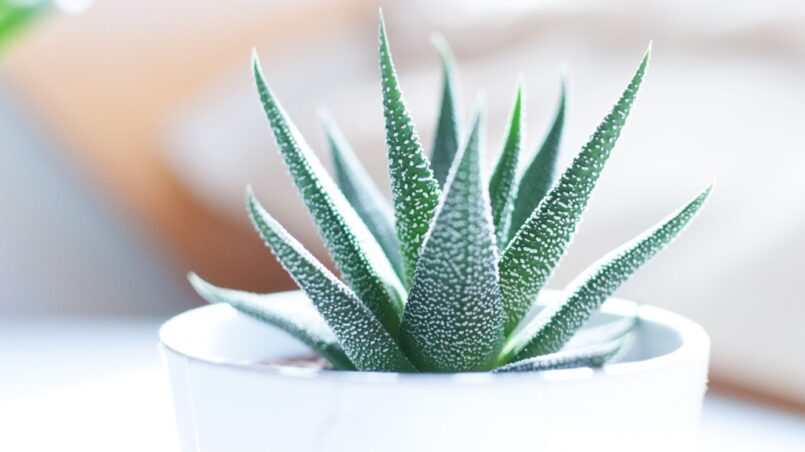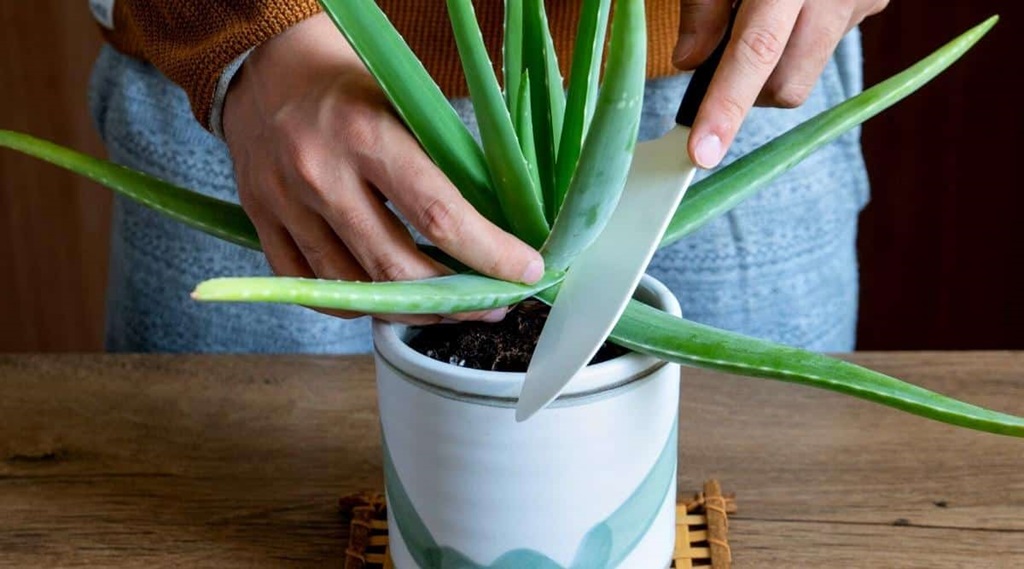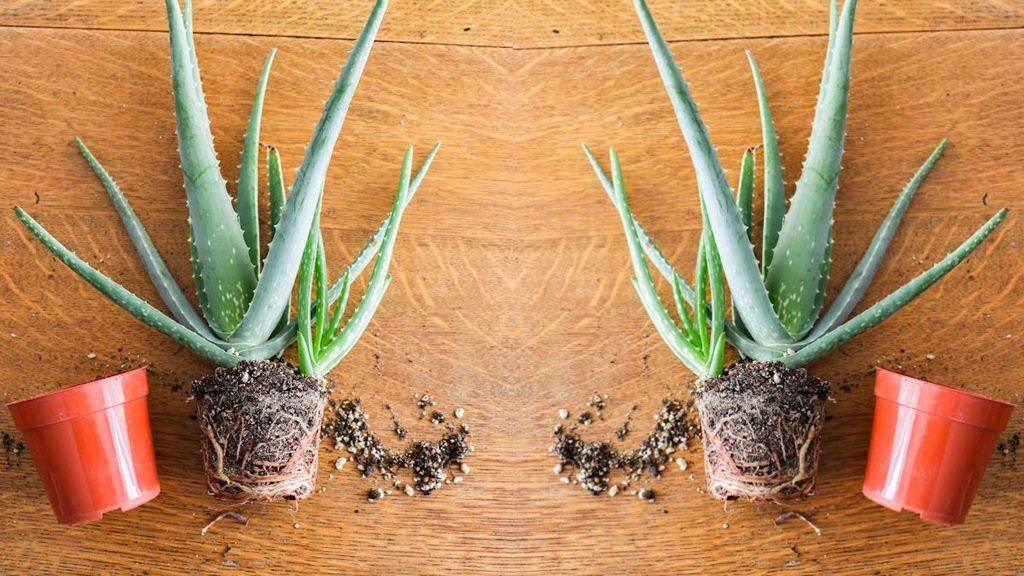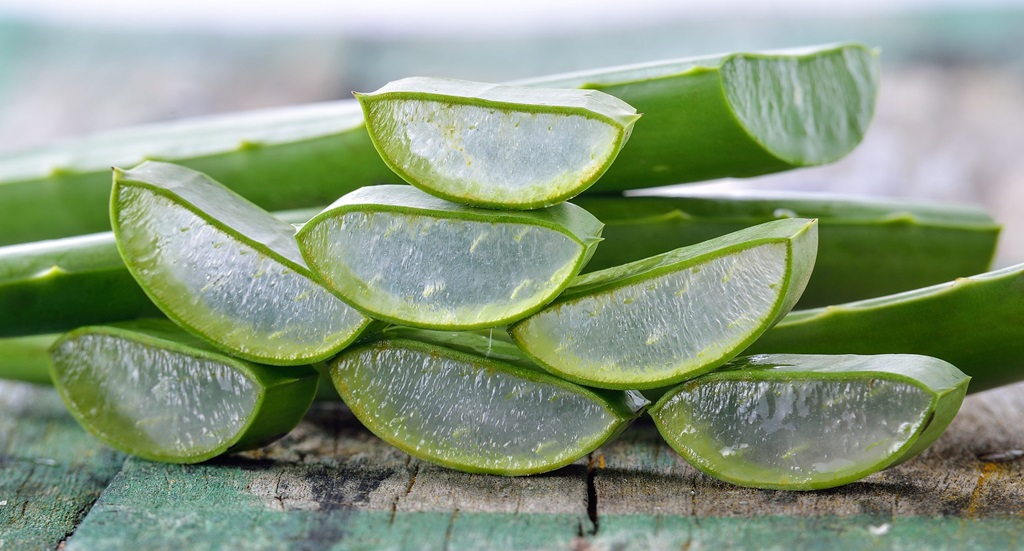Aloe vera is one of my favorite plants to grow. Not only is it super easy to care for, but it’s also incredibly useful! The gel from aloe leaves can soothe sunburns, moisturize skin, and even help heal wounds. Having my aloe plant means I can always access fresh aloe gel.
However, aloe plants sometimes outgrow their pots and must be cut back. Improper cutting can damage or kill the plant, so knowing the proper techniques is essential. After years of trial and error, I’ve learned how to cut aloe vera plant without killing it.
I’ll share everything I’ve learned about adequately cutting back an aloe plant in this guide. I’ll cover:
- Why you may need to cut your aloe plant
- When to trim your aloe
- What tools to use
- How to cut the leaves
- How to cut the roots
- Aftercare tips for cutting aloe plants
- Propagating aloe pups
Let’s get into it!
Why You May Need to Cut Back Your Aloe Plant
Here are some of the main reasons you may need to do some trimming on your aloe vera:
- It’s overgrown. Aloe plants grow fast once established. If your plant is getting too big for its pot, it’s probably time for a trim.
- It’s going leggy. Sometimes, aloe plants start to get “leggy,” meaning they have a lot of floppy growth and look stretched out. Cutting back leggy growth encourages bushier, compact plants.
- To propagate new plants. Cutting offsets or “pups” from the sides of mature aloe plants gives you a simple way to propagate more plants.
- To harvest aloe gel. Trimming some outer leaves allows you to regularly gather fresh aloe gel for use on the skin or in DIY products.
- It has dead leaves. Cutting away dried-out or dead leaves improves your aloe plant’s overall look and health.
When to Trim Your Aloe Vera
Timing is essential when cutting back aloe. Here’s when it’s best to give your plant a trim:
- Spring or summer are ideal times to trim overgrown aloe plants. Cutting in warmer months gives them time to regrow before winter.
- Early spring is an excellent time to prune away winter damage or dead leaves.
- Before repotting, trim aloe roots and leaves to fit them into a new container.
- Trim leggy growth at any time to encourage bushy growth.
- Dead leaves can be removed year-round. Just be careful not to cut too many healthy leaves during colder months.
Avoid pruning aloe in the fall or winter when growth is slower. And never remove more than 1/3 of the plant at once, even in summer.
What Tools to Use for Cutting Aloe
You need a few simple tools on hand to trim your aloe successfully:
- Sharp, sterile pruning shears or scissors. Clean blades will ensure clean cuts that heal quickly.
- Garden knife or razor (for removing offsets or leaves). Again, you want a very sharp, sterile blade.
- Cubic paint brush (optional for applying paste to cut surfaces)
- Rooting hormone powder (optional for rooting offsets or pups)
Clean and sanitize tools before each use to prevent the spreading of disease. Rubbing alcohol works well for this.
How to Cut Aloe Leaves
When trimming leaves, it’s vital to do it carefully to avoid harming the plant. Here’s how:
- Select leaves to remove. Focus on damaged, dried-out, or overcrowded leaves around the bottom or outer edges of the plant. Don’t remove more than 2-3 at a time.
- Trim near the base. Use sharp pruners or scissors to cut leaves off right at the base, where they meet the stem. Do not cut into or damage the main stem.
- Trim away dead tips. Using scissors or a knife, snip off any dead, dried brown material from the ends of the remaining leaves.
- Apply paste to cuts (optional). To prevent infection, you can dab some aloe gel or honey on cut areas.
- Rinse cuts. Gently rinse off any latex sap that seeps from cut leaves. This sap can be irritating.
Be selective when removing leaves – don’t over-trigue healthy foliage or risk damaging the plant. Taking off too many leaves at once stresses aloe vera plants.
How to Trim Aloe Roots
If your aloe has become extremely rootbound or you want to move it to a smaller pot, you may need to do some root trimming:
- Remove from pot. Gently squeeze and tip the pot to slide the plant out. Loosen clinging roots.
- Rinse roots. Use water to rinse off all the old potting mix clinging to the roots.
- Trim back roots. Use sterilized pruners or scissors to remove diseased, rotten, or excessively tangled roots.
- Replant. Put back in an original or new pot with fresh potting mix. Water well.
Be careful not to damage the plant by over-trimming roots. Only remove what’s necessary to improve growth.
Aftercare Tips for Cut Aloe Plants
After pruning your aloe vera plant, following proper aftercare is crucial. Here are some tips:
- Let sit 1-2 days before rewatering to allow cuts to callous over.
- Water sparingly at first to prevent rot in tender cuts.
- Provide bright, indirect light while the plant rebounds from trimming.
- Hold off fertilizing for 2-3 weeks until new growth emerges.
- Monitor for signs of infection, like soft black spots. Treat with antifungal spray if needed.
- Be patient! It can take a few weeks for the plant to recover from pruning fully. Restrict trimming for a while.
With the proper aftercare, your aloe will bounce back more beautiful than ever! Just be sure not to over-trim it again too soon.
Propagating Aloe Vera Pups
One benefit of pruning overgrown aloe plants is that you can propagate new plants from the cuttings! Here’s how to root aloe pups:
- Select healthy pups. Look for solid baby plants (or offsets) sprouting from the base of mature aloe plants. Gently remove using a knife.
- Let pups callous over. Place offsets on a dry surface for 1-2 days until cut ends from callouses.
- Dip in rooting hormone (optional). To spur root growth, you can dip the ends in powdered rooting hormone.
- Plant in pots. Fill small pots with well-draining soil and plant aloe pups below the surface.
- Water sparingly at first. Water new plants lightly until new roots are established only when the soil is arid.
- Provide warm conditions. Keep new pots in a sunny, warm spot (70-80°F) until new growth emerges.
With the proper care, those pups will grow into complete aloe plants you can use or gift to fellow plant lovers!
Conclusion
Successfully trimming back aloe vera plants while keeping them healthy is possible. Just be selective about what leaves and roots you remove. Always use clean, sharp tools and provide proper aftercare. With the right approach, you can keep aloe plants tidy, productive, and full of gel!
Be sure to check out how to cut aloe vera plant without killing it if you want to become a true pro. I cover everything from choosing suitable pots and soil mixes to troubleshooting diseases and pests. Growing a thriving aloe collection you can harvest from is very rewarding. These valuable plants deserve a spot in every home and garden! So get out your scissors, and let’s start trimming.
FAQs
1. Should you cut an aloe plant that is flowering?
It’s best not to cut back aloe plants that are flowering. Removing the flower stalk can disrupt the bloom. Wait to trim until the flowers fade.
2. Can you trim aloe in the winter?
Avoid extensive pruning in winter when growth is slow. However, you can remove any dead leaves and stimulate growth. Just don’t over-trim healthy foliage.
3. How short can you cut aloe leaves?
Only cut leaves down to about 2 inches above the base of the plant. Removing more risks damaging the main stem. Always cut at an angle, too.
4. Should you cut off babies from the aloe plant?
You can gently remove “pups” or babies when they reach 2-4 inches tall. This encourages the parent plant to generate more offsets you can propagate.
5. What happens if you cut too much of an aloe plant?
Cutting away too much foliage at once stresses the plant. This can cause reduced growth, sunburn, infection, and even death. Be conservative when trimming.

















